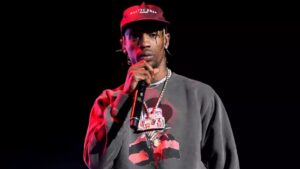Kylie Jenner’s story is often reduced to a headline: the youngest billionaire, crowned by Forbes before the ink even dried on her 21st birthday. But the real intrigue lies not just in the number attached to her name — it’s in how she rewrote the rules of celebrity business in the digital age. Growing up on Keeping Up With the Kardashians gave her a platform, but it was Instagram that became her true stage, turning selfies into storefronts and followers into customers.
Unlike traditional celebrity ventures that leaned on licensing deals or department store placements, Kylie operated as a digital entrepreneur from day one. Her strategy fused social media branding with direct-to-consumer sales, pioneering a playbook that many influencers — and even established beauty giants — would later chase.
Her rise is worth studying because it signals a broader shift in the influencer economy: fame alone isn’t enough, but fame paired with timing, authenticity, and a savvy celebrity business model can scale into an empire almost overnight. The Kylie effect isn’t just about cosmetics; it’s about cultural timing meeting entrepreneurial instinct.
The Spark Before the Storm — Early Fame and Strategic Positioning
Growing Up in the Kardashian Machine
Kylie Jenner’s early years unfolded in the glare of cameras, yet she was rarely the center of the Kardashian spotlight. While Kim, Khloé, and Kourtney dominated headlines, Kylie played the role of the “quiet sister,” orbiting the family’s fame rather than driving it. This positioning, though seemingly passive, became a kind of fame incubation. Viewers of Keeping Up with the Kardashians watched her grow up in real time, granting her cultural visibility without the overexposure that sometimes-fatigued audiences of her older sisters.
The family’s media strategy — carefully crafted storylines, orchestrated press moments, and a constant stream of content — laid the foundation for her trajectory. But when social media growth shifted the terrain of celebrity branding roots, Kylie was uniquely poised to capitalize. By not being the expected star, she later surprised the market, transforming from a reality TV background character into a digital-era entrepreneur with global reach.
Building an Audience Before Building a Brand
Long before Kylie Jenner sold a single lip kit, she was experimenting with what Instagram could do beyond selfies. The platform became her sandbox, where she tested different aesthetics — from bold makeup looks to curated glimpses of an aspirational lifestyle — all while gauging what resonated most with her followers. This wasn’t accidental; it was an early form of understanding the follower economy, where attention itself was currency.
By blending relatability (teenage selfies in her bedroom) with exclusivity (glamorous events and rare behind-the-scenes moments), Kylie created a digital-first identity that felt both accessible and untouchable. She also understood the power of scarcity before most brands did — deleting posts, teasing product hints, and letting silence build speculation. What did she intuit about digital attention that global corporations missed? That influence isn’t just broadcast — it’s cultivated through narrative, timing, and the illusion of intimacy, all anchored in Instagram influence.
Kylie’s Digital Milestones
| Year | Key Milestone |
|---|---|
| 2007 | First appearance on Keeping Up With the Kardashians, gaining early exposure through family media strategy. |
| 2011 | Joins Instagram, beginning to build a digital-first identity. |
| 2014 | surpassed 100 million Instagram followers, cementing her as a global influencer. |
| 2015 | Reached 10 million Instagram followers, proving her rising influence with Gen Z and millennials. |
| 2016 | Founds Kylie Cosmetics, expanding a viral product into a direct-to-consumer beauty brand. |
| 2018 | Surpasses 100 million Instagram followers, cementing her as a global influencer. |
| 2019 | Named the youngest “self-made billionaire” by Forbes, sparking cultural debate. |
| 2020 | Coty acquires 51% of Kylie Cosmetics, marking its transition into a corporate-backed powerhouse. |
Lip Kits, Scarcity, and the Birth of a Modern Brand
The Scarcity Play — Drop Culture Meets Makeup
When Kylie Jenner launched her first Lip Kits in 2015, the beauty industry witnessed a playbook it hadn’t seen before. Instead of stocking shelves in department stores or flooding drugstores with endless supply, Kylie borrowed directly from sneaker and streetwear culture: the drop. A limited quantity, released online, hyped across Instagram, and gone within minutes — the formula created an e-commerce hype cycle that beauty had never fully embraced.
The frenzy wasn’t just about lipstick; it was about being part of a cultural moment. Fans posted screenshots of checkout successes, while those who missed out fueled the narrative of product scarcity. Each sold-out launch reinforced exclusivity and raised demand for the next drop.
Why did scarcity feel so revolutionary in beauty retail at that time? Because the industry was still rooted in abundance and accessibility. Kylie flipped that model, making makeup feel like a collector’s item, not a commodity. It wasn’t just a product — it was a status symbol engineered through scarcity, timing, and digital buzz.
E-Commerce over Brick-and-Mortar
Kylie Jenner’s decision to launch Kylie Lip Kits as a direct-to-consumer beauty brand was as disruptive as the product itself. At a time when legacy players still leaned heavily on department store counters and glossy magazine ads, Kylie bypassed those gatekeepers entirely. Her audience didn’t discover products under fluorescent lights at Macy’s — they discovered them through her Instagram feed, where every post doubled as both lifestyle content and a digital storefront.
This shift mattered. By selling online only, Kylie owned the customer relationship in ways older beauty brands never could. She controlled pricing, distribution, and messaging without middlemen, while harnessing social media retail to drive urgency. Instagram wasn’t just marketing; it became the marketplace.
Where beauty once relied on physical shelves and retail partnerships, Kylie proved a celebrity could build a billion-dollar valuation without ever needing a brick-and-mortar presence. The direct-to-consumer model wasn’t new, but her execution showed how powerfully it could scale when fused with influencer culture and a ready-made global audience.
The Instagram Business Model in Action
Turning Selfies into Sales Funnels
Kylie Jenner mastered a skill that many brands still struggle to replicate: turning the casual selfie into a sales funnel. What looked like a simple post — a close-up of her lips, a bathroom mirror shot, a casual behind-the-scenes clip — doubled as soft advertising for her products. The genius wasn’t in overt promotion but in the seamless fusion of content and commerce. Followers weren’t scrolling past ads; they were consuming moments of her life that just happened to feature the latest shade of lipstick.
This content-commerce fusion blurred authenticity with marketing. Was it manipulation, or simply the next stage in the influencer economy? In many ways, Kylie anticipated how social media monetization would evolve, setting the tone for how creators now balance personality with product placement. Her feed became both diary and storefront, making every post a potential purchase point — a digital intimacy that converted attention into revenue.
Influencer Before Influencer Culture
Before “influencer marketing” became a defined industry, Kylie Jenner was already sketching its blueprint. Her early Instagram-to-sales funnel showed how a celebrity could act as both brand and distributor, collapsing the distance between personality and product. Unlike today’s micro-influencers, who carefully curate authenticity to drive small but loyal conversions, Kylie operated on a massive scale — yet with a similar logic: trust me, buy what I use.
Her fame gave her instant reach, but it was her methods that set a precedent. She didn’t wait for partnerships with beauty conglomerates; instead, she leveraged the creator economy before the term was mainstream. In doing so, she reframed the role of a celebrity as a brand, turning influence into infrastructure. What looks commonplace now — an Instagram post converting directly into sales — was once radical, and Kylie’s playbook helped define the influencer blueprint still shaping social commerce today.
Scaling Beyond Makeup — Reinvention Through Expansion
From Lip Kits to Lifestyle
After proving she could dominate the beauty aisle with a single product, Kylie Jenner pivoted toward building a broader lifestyle brand. Kylie Skin arrived in 2019, extending her empire beyond makeup into everyday routines, framed as a natural next step for fans who wanted not just her look, but her regimen. Kylie Baby followed, signaling a shift into family-centered products, tying her journey as a young mother to a new consumer category. Even fragrance collaborations hinted at a desire to move her name into more intimate, sensory spaces.
These weren’t random experiments; they were deliberate plays in lifestyle branding. Each move was a reinvention, designed to capture different touchpoints of her audience’s lives. Beauty diversification allowed Kylie to transcend being “the lip kit girl” and position herself as a multi-category brand architect. In doing so, she tested how far her influence could stretch — from vanity tables to nursery shelves.
Navigating Successes and Stumbles
Kylie Jenner’s empire wasn’t built on unbroken wins. While Kylie Cosmetics became a cultural juggernaut, not every extension struck the same chord. Kylie Skin, though successful at launch, faced critiques over product quality and crowded competition. Kylie Baby, despite its resonance, entered a market where brand loyalty is hard to disrupt. Even fragrance collaborations struggled to achieve the viral pull of her lip kits.
These moments of uneven consumer reception highlight the entrepreneurial risks of rapid diversification. For a celebrity brand, expansion carries both opportunity and vulnerability: one misstep can be amplified across millions of followers. Yet, Kylie’s willingness to experiment reflects brand evolution in action. What does failure reveal about scaling a celebrity brand? That resilience and recalibration matter as much as vision. In navigating stumbles, Kylie demonstrates that reinvention isn’t about flawless execution, but about sustaining momentum when the hype inevitably dips.
Celebrity Beauty Brands by the Numbers
| Brand | Key Stats |
|---|---|
| Kylie Cosmetics (2015) | Revenue peaked at ~$360M in 2018 • 25M+ Instagram followers • Sold via Ulta + DTC • Edge: scarcity drops & social media hype |
| Fenty Beauty (2017) | ~$582M revenue in 2022 • 13M+ Instagram followers • Sephora, Ulta, DTC • Edge: shade inclusivity & representation |
| SKKN by Kim (2022) | Revenue undisclosed (early stage) • 5M+ Instagram followers • DTC only • Edge: minimalist luxury skincare |
| Rare Beauty (2020) | ~$300M+ revenue (2023) • 6M+ Instagram followers • Sephora + DTC • Edge: advocacy-driven, Gen Z resonance |
| Rhode (2022) | ~$100M estimated revenue • 2M+ Instagram followers • DTC only • Edge: skincare minimalism & “glazed” aesthetic |
Competitors, Contemporaries, and Context
Kylie Jenner may have set the pace for celebrity-led beauty, but she’s far from alone in the space. Rihanna’s Fenty Beauty disrupted the market in 2017 with inclusivity as its foundation, debuting 40 shades of foundation and forcing legacy brands to rethink diversity in cosmetics. Where Kylie leaned into exclusivity and hype, Rihanna built trust through accessibility and representation. Both proved that a celebrity beauty brand could compete at the highest industry benchmarks, but by targeting different consumer needs.
Kim Kardashian’s SKKN, launched in 2022, represents another path: a luxury-focused rebrand that emphasizes minimalism and high-end skincare. Selena Gomez’s Rare Beauty built a following through emotional connection, emphasizing mental health advocacy alongside product sales — a move that resonated deeply with Gen Z. Meanwhile, Hailey Bieber’s Rhode takes a stripped-down, skincare-first approach, relying heavily on minimalist aesthetics and community-driven launches.
Rather than standing as an anomaly, Kylie is part of a celebrity-entrepreneur wave that diversified strategies: exclusivity, inclusivity, luxury, advocacy, and minimalism. Her edge remains the scale and speed of her early success, but the competitive analysis shows that today’s market demands more than hype. Sustained success requires a brand identity that evolves as quickly as consumer expectations.
The Criticism Factor — Authenticity, Privilege, and Perception
Kylie Jenner’s meteoric success has never been free from scrutiny. The “self-made billionaire” label sparked fierce debate, with critics pointing out the privilege of being born into the Kardashian-Jenner empire. The nepotism debate questioned whether her achievements were truly entrepreneurial or simply the byproduct of inherited visibility and resources.
Yet, this conversation also reveals a deeper tension in modern branding: does privilege erase execution, or can both truths coexist? Kylie undeniably had advantages, but her ability to transform attention into a direct-to-consumer empire speaks to strategic skill. For consumers, the question of brand authenticity lingers. Transparency in branding — from supply chains to storytelling — is increasingly demanded, and Kylie’s journey highlights how consumer trust can be fragile when narratives of merit and privilege collide. Her case underscores a broader cultural reckoning: in the influencer economy, perception can shape success as much as performance.
The Day I Saw the Kylie Effect in Action
I remember stepping into a pop-up beauty event in Los Angeles when Kylie Cosmetics was still fresh off its first viral sell-outs. The line wrapped around the block — teenagers in oversized hoodies, moms clutching shopping bags, influencers angling for the perfect selfie with the storefront display. Inside, the air buzzed with the kind of anticipation usually reserved for concert venues, not makeup counters. Every phone was out, recording, snapping, broadcasting the moment to thousands of feeds in real time.
When Kylie appeared briefly, the reaction was electric. It wasn’t just about buying a lip kit; it was about being part of the spectacle, a chapter in consumer culture that blurred fandom with commerce. Watching the frenzy unfold, I realized her celebrity aura wasn’t confined to screens — it carried into physical spaces, amplifying desire.
That beauty launch frenzy revealed something bigger: Kylie wasn’t selling makeup alone; she was selling participation in a cultural event. The product was the ticket, the Instagram story was the receipt, and the demand was fueled by the chance to say, “I was there.”
Digital Tools Shaping the Next Chapter
AI Personalization and Shade Matching
The next frontier for Kylie Cosmetics may lie in AI-powered personalization. Imagine an online shopper uploading a selfie and, within seconds, receiving tailored shade recommendations for foundation, lip color, or even curated product bundles. This isn’t far-fetched — L’Oréal has invested heavily in AI in beauty, acquiring tech startups to perfect virtual try-ons, while Sephora’s AR tools already allow customers to preview shades with surprising accuracy.

For Kylie, integrating personalization tech would be a natural evolution of her digital-first approach. Her audience, accustomed to quick mobile interactions, would likely embrace tools that reduce the guesswork of buying online. Beyond convenience, it strengthens consumer trust by making the experience feel individualized. In a crowded market, digital beauty innovation that turns data into delight could reframe Kylie’s brand not just as trend-driven, but as technologically forward. The question is whether she’ll lead this shift — or follow.
Augmented Reality Try-Ons and Virtual Pop-Ups
Augmented reality cosmetics are quickly moving from novelty to norm. Shoppers can already swipe through Instagram filters to preview lip shades or test eyeliner shapes, making the phone camera a kind of digital mirror. Virtual retail experiments — from pop-up stores in gaming platforms to immersive shopping apps — suggest that the future of beauty will be as much about experience as it is about product.
For Kylie Cosmetics, the potential is obvious. Imagine limited-edition launches revealed first through an AR filter, or a virtual pop-up where fans “walk” through curated rooms styled in her signature aesthetic. These tools don’t just replicate the store; they create immersive shopping moments that extend Kylie’s cultural aura into digital space.
The question is less about feasibility and more about leadership: will Kylie push to the front of beauty tech innovation, or risk being a fast follower as competitors stake their ground in virtual retail?
Global Frontiers — Where Kylie Hasn’t Conquered Yet
For all its global buzz, Kylie Cosmetics remains heavily concentrated in Western markets. The next wave of growth lies in emerging markets like India, the Middle East, and Southeast Asia — regions where beauty standards and consumer habits differ significantly from the U.S. and Europe. In India, for example, skincare often outweighs makeup in consumer spending, and products must adapt to diverse skin tones and climates. In the Middle East, luxury packaging and long-wear formulas resonate with cultural preferences, while Southeast Asia’s young, digital-native shoppers favor affordable experimentation and K-beauty influences.
Global beauty expansion in these regions requires more than shipping products overseas; it demands cultural adaptation. Should Kylie’s brand lean into local partnerships or maintain its global consistency as a celebrity-driven label? Striking that balance will determine whether her influence translates across borders. Emerging markets in beauty represent not just untapped sales, but a test of whether the Kylie playbook can evolve beyond its American roots.
The Blueprint for Building a Modern Celebrity Empire
Kylie Jenner’s trajectory offers more than a tale of lip kits and Instagram selfies — it’s a cultural case study in how fame can be leveraged into lasting enterprise. Her rise underscores the pillars of modern celebrity entrepreneurship: audience-first marketing that listens as much as it sells, sharp timing in aligning launches with digital momentum, ownership leverage that gave her control over narrative and profit, and a willingness to reinvent when categories shifted.
What emerges is not just Kylie’s playbook, but a digital branding blueprint relevant to any public figure navigating the influencer economy. She showed that the intersection of fame, business, and technology is no longer optional — it’s the foundation of staying relevant.
Kylie’s empire matters because it reveals how celebrity today is less about the spotlight and more about scalability. In a world where attention is currency, she turned hers into an empire that continues to evolve.
Nishant Wagh is the founder of The Graval and a seasoned SEO and content strategist with over 15 years of experience. He writes with a focus on digital influence, authority, and long-term search visibility.





6 thoughts on “Kylie Jenner’s Rise and Reinvention: Scaling a Beauty Empire in the Age of Instagram”